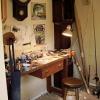Leaderboard
-
in all areas
- All areas
- Images
- Image Comments
- Image Reviews
- Albums
- Album Comments
- Album Reviews
- Topics
- Posts
- Stories
- Story Comments
- Story Reviews
- Classified Ads
- Classified Ad Comments
- Classified Ad Reviews
- Records
- Record Comments
- Record Reviews
- Websites
- Website Comments
- Website Reviews
- Status Updates
- Status Replies
-
Custom Date
-
All time
February 2 2011 - January 16 2025
-
Year
January 16 2024 - January 16 2025
-
Month
December 16 2024 - January 16 2025
-
Week
January 9 2025 - January 16 2025
-
Today
January 16 2025
-
Custom Date
04/27/2012 - 04/27/2012
-
All time
Popular Content
Showing content with the highest reputation on 04/27/2012 in all areas
-
I sent you that link because you have a better chance at getting it in a timely manner. Most of you know what I mean. Same price in both places. Frank2 points
-
I've made a template that has all the info on what I'm building. I've simplified things by only making one style, and by changing the angle of the bill, it gives me a different diving bait. Since they are basically all the same (weight wise) the ballast doesn't change much, the line tie and hook hangers remain the same. Jerry1 point
-
I keep notes on every batch of crankbaits. Even if you build only one bait per month, believe me, you will forget the build details of number 1 by the time you finish number 12. Notes will help you eliminate mistakes in the future and more importantly, they will tell you how to replicate a great crankbait which you will only identify after you have fished it. I note the body shape, lip shape and angle, and ballast position from the patterns I use to make them. Then I note type of wood, lip material, ballast amount, type of undercoating and topcoating, and the wire used for the hardware. I weight each finished crankbait on a digital scale to 1/100 oz and list its paint scheme. If I can think of more stuff to note, I do it. You cannot have too much info.1 point
-
i draw patterns of the plugs i make on 1/4 inch plywood and mark the weight,hooks,eyes ect on one side and depth of holes weight ect on the other side and i drill the eyehole and hang it up by that1 point
-
Bob, you're not only disagreeing with me on the venting, but you're also disagreeing with companies like Zorn Molds and D&L Molds. Both are very large companies with several employees who specialize specifically in large scale production molds for the soft plastic industry. And what you're talking about is simple plastic shrinkage and has nothing to do with venting. That's the reason people have to keep topping off their molds because as the plastic cools it shrinks but the sides of the baits are formed instantly. If you have a cool mold and you shoot the bait and instantly demold it just as fast as you can, you'll find the outside of the bait has formed, therefore it has solidified, not being able to pull from the vents, it has to pull from the opening that's still hot at the end of the sprue. The softer the plastic, the thicker the bait, the worse the dent will be because the softer the plastic, the more it shrinks. These all are definitely facts, and you can ask any large producer of plastic in the industry. Time, temperature and pressure are the 3 keys to making a quality product and considering I've made and sold well over a million pieces last year I do know a little bit about this. But it sounds like shrinkage was only part of his problem. Also every one of my molds are water cooled and I have no issues and there is definitely no safety problems. When in production, our molds don't run over 70 degrees. Bob, I've had my fair share of denting problems, one of the bluegill bodies that I make was a severe denter, no matter how much pressure, or time I gave it, I still had a dent the size of the end of your finger, and when I talk about pressure, my small press has 8000 lbs of closing force and I've parted it a couple of times. But when I changed from a medium to a medium hard plastisol, the problem stopped. The harder the plastic the less shrinkage. If what you're saying is true, then why doesn't an open hand pour mold have a severe shrinkage dimple? It is capable of drawing as much air as it wants. An open pour mold shrinks from the top down, it doesn't draw bubbles out of the air into the plastic, it just shrinks. And you don't get dimples on the side of the bait, just at the top. This is because that is the hottest point for shrinkage to take place. The sides of the bait form immediately. Bob I've never seen a bait that couldn't be vented in a certain spot. Like I've said before, from nose to tail, the standard is venting every 1/4 inch on both sides of the bait. There does have to be deeper dump channels, to make sure the air has plenty of room to escape once vented, and sometimes, these deeper channels have holes in them to let the air escape completely from the mold, but no plastic goes into the vents whatsoever. There are no holes to clean out. And as far as say the legs of the bait not filling out, it could be a venting issue, but it could very well be a freeze off issue also. In other words, the plastic is cooling before it reaches the bottom of the caivity. Now if you have a large bubble void, that looks like a bubble has popped, or if you have a large bubble in the bait and you're absolutely sure there was no bubble in the plastic, then it's definitely a venting problem and can be nothing else but. And as far as gravity goes, all large scale production molds are standardly shot from the bottom up, so gravity really has no play in pushing the air out. Sufficient venting is a must. The only exception to this rule that I know of in large scale production is pie molds that lay flat and shoot from the side. This technique does not work with some baits because you can't get the air out of them. As far as the sprues go, I've made a rough drawing of the ones I was talking about and have an arrow drawn to it where I feel like the sprue is too long and causing a problem. Also on this same drawing, I've circled the spot that I don't understand why moldmakers don't vent. Almost all of the hand injected molds I've seen don't apprear to have a vent at the end of the sprue. So instead of getting the plastic as fast as possible into the mold, you have to force the air through each cavity. All of my runners or sprues, are vented to allow maximum delivery of the hot plastic. Not all molds are made like the one I'm talking about, but the ones that are made like this make it impossible to hold any amount of pressure because the sprue is freezing off before the bait preventing actual pressure to the cavity. Therefore, causing a shrinkage dimple. I've also drawn down below that one, the way to me it would be obvious to do a mold in order to keep adequate pressure to relieve some venting problems. I've seen several molds that are being done this way. But if your bait immediately branches off of the main runner, then you should have no reason for a heat sink. You would use less material, the mold maker would use less material and the production would be faster because you're delivering the plastic almost directly into the bait cavity. Probably not that much faster, but faster all the same. I mentioned that my biggest runner was 3/8", I did fail to mention that my smallest one is 3/16" and you're absolutely right Bob, this is a very forgiving mold. 200 baits have a turn around time of around 40 seconds and they absolutely never dent. But the smaller the bait, the more pressure I can put to it. If I try to shoot a larger bait with the same pressure that I shoot the smaller bait it would actually part the press and flash terribly, and I talking about the press with 15000 lbs of closing force. I'm far from a big time bait maker but I am lucky enough to be able to do this for a living but remember I'm only about 5 years into this end of it, there's 9 years plus of hand pouring and hand injecting and a lot of this work was done before hand injection was ever a standard. The small bait up there that I just mentioned I used to produce by pouring hot plastic into a reservoir at the top of the mold and taking an aluminum plunger and forcing the plastic down into the cavities. We made thousands and thousands this way. Imagine my shock the first time I ran the production mold. I agree with you, some people don't have any trouble but it seems like this issue is coming up a lot here lately. Truthfully I think between me and you the softness of the material has a lot to do with it. A lot of the more experienced pourers after buying their plastisol still kind of do their own things and mix their own formulas working out these problems. As far as dents from major companies go, I got a pack of the Z company's the other day, to do a color match for a customer, every bait was severely dented and I mean severely dented and not in the thickest part of the bait either but actually at the hook point of the bait. And it's real obvious to tell by the shape of these dents and the severity of them, that they definitely have a pressure problem. And as far as lizards go, they are almost impossible not to have some sort of dent. For some reason, the belly of a lizard just wants to cave in. I don't have that problem myself, but lizards are one of the worst to dent along with stick baits. And to make sure that I haven't given any wrong information because this is something I would never knowingly do, I called one of the higher ups today before I posted to make sure I was correct on what I was saying and they assured me I was 100% accurate. And yes these folks are big time in the industry. Real big. Cormorant the only thing I can add if you're getting microbubbles in the bait then they are being drawn in from the injector, if there's no microbubbles in the plastic when you pull it up in the injector, then there should be no microbubbles in the bait. But like I said, there's 3 main variables to producing good products in soft plastics, time, temperature and pressure. Any bad baits can always be attributed to one of these factors.1 point
-
I spent all winter this past year making baits that didn't work, it was frustrating sometimes but after each failure I would search the forums and learn something new to try. I finally can make a bait that works now and it is worth every failure that I endured. Keep your head in it and ask those specific questions.1 point
-
Hey one other tip. Don't spend all your time on internet looking up info. Not that it is not a good thing to do Start practicing what you learn. To me it sort of like when you first learn to ride a bicycle. Yeah you can watch videos and read up on all kinds of bicycles, which ones are better than others, which ones work better for riding conditions. But if you've never rode one, you will be a little wobbly even with training wheels the first time. So go for it and keep the first lures you make and then compare it with baits you make some time later. You will be amazed as the progress. As you make baits you will hone in on specific questions and then the experience folks can really help you with specifics. Also learn to take photos and post with any questions about specific issue that you run into. It will certainly help troubleshooting. Also it doesn't hurt to brag about you accomplishments.1 point
-
Caney Creek Wutzit is my favorite. The Laminate plate works well too. http://www.caneycreekmolds.com/Wutz-It--5--4-Cavity_p_97.html ....Bill1 point
-
Like Ben says. Not trying to hammer anybody but as I learning tackle making (and I learn something everyday) I have found the best lure making tool for me is the internet search engine and the search funtion on forums. I have 10 -yeah 10- lure/ tackle making forums on my favorites list that I regularly visit. And I manage to find them using the search function looking for specific help. I also found the tutorials or How-to sections on the various sites have cut my learning time and budget by a bunch. Also if you want to see some video's there are lots of How-tos on You tube. It amazing how much information is out there. Keep in mind whats out there may show you just one way of doing a technique. Here's another tip: If you find a particular lure builder's post interesting, check out his profile and clicking on posts. It can cut out having to scan thru pages and pages of threads not related to what you are looking for. I know this doesn't answer you questions but you will have more and more and trying to help you find many answers and opinions that are out there.1 point
-
Question 1: What is the most common or "best" way to seal balsa before laying down a base coat? I use Devcon 2 Ton to seal balsa lures. Thin it slightly with denatured alcohol, sand with 400 grit before painting, and recoat if you sand through the epoxy to raw balsa anywhere. IMO, the best alternative to D2T is multiple dips in a propionate/acetone solution. Question 2: Since most of my baits will be balsa ( 3 inches or less) and i plan to use through-wire, where can one source the apropriate wire? I have seen folks mention using bicycle spokes but that doesn't seem like a viable option for me... I like SOFT temper .041" type 304 stainless steel wire from McMaster-Carr (cat nr 8860K16), a good online source for wire, Lexan, circuit board Question 3: I have read numerous opinions concerning topcoat epoxies/dips etc and have narrowed it down to D2T and Dick Nite's S83(?). I emailed DN yesterday from the link on the corresponding thread but haven't heard back yet... Is this product still available? One product, 2 uses: D2T is a fine topcoat for balsa lures and is also good for sealing. I'm not sure what S83 is but I only like Dick Nite moisture cured urethane S81. Don't forget to cut your lip slot just after cutting out the basic lure blank - while it's still "square".1 point
-
So I finally think I've got this Pourasol down to a science and at least I know I've got the 3.5" Croaker molds figured out... First off the plastic: I heated up my plastic like normal in my presto pot... Before shooting my first set of molds, I shut off the stirring mechanism and let all the microbubbles rise to the top... Now thanks to one of the posts I read in either this forum or another forum, I lit my blow torch and watched all the microbubbles burst on the surface... Again, THANK YOU to whoever came up with this little trick, it is probably the coolest and easiest idea I have used to date!!! Watching all those microbubbles burst was like a release of BAD CARMA!!! I also thought of a new storage vessel tonight while at my grandparents house... I was sitting on the couch and picked up a local Menard's ad and there IT was on the back page... One of those rubbemaid water coolers like you use for camping and such... It's perfect for my purpose, it can hold 5 gallons of plastic, it has a really nice pouring spout, and the top comes on and off with ease and allows for me to easily use my paint mixer when necessary... So it seems that the Lureworks Pourasol is finally becoming user friendly for this novice bait maker... Now to the molds: I am also going to include a little updated information on my injector situation as well... It seems that lubrication is the key for a happy injector... My o-rings seem to be doing just fine as long as they stay lubricated with a little bit of worm oil... Now last night it seemed as though I thought I had my mold and injector situation under control... I guess I thought that WAY to soon... Things went south quickly and I thought it was going to be another rough night in the laboratory... But I took the advice that many have given me and I decided I needed to figure out what I was doing wrong... Inject to fast and the feet filled up correctly but I was having problems with air pockets around the eye sockets... Inject to slow and the air pockets around the eye sockets disappear but the feet did not fill up correctly... Soon after experimenting with both fast and slow injection rates, I began to incorporate BOTH and found that it worked PERFECTLY EVERYTIME!!! So it boils down to this: There is about a 1/2" or so of injecting that is involved with a 3.5" Croaker mold... I found that if I inject the first 3/8" really slow and the last 1/8" super fast, not only do the voids around the eye sockets disappear but so do the feet problems!!! I have now shot 2 1/2 presto pots full of frogs and have only had about 4 total bad ones out of the 150 or so that I injected... Pretty darn good success rate if I say so myself... I haven't done any recent injecting with my craw molds... I would like to get the claw dent situation figured out as well... Hopefully if I can use the same type of diagnosing techniques I used for the frog molds, I can get rid of those pesky dents... THANKS AGAIN FOR ALL WHO HAVE CONTRIBUTED!!!1 point







